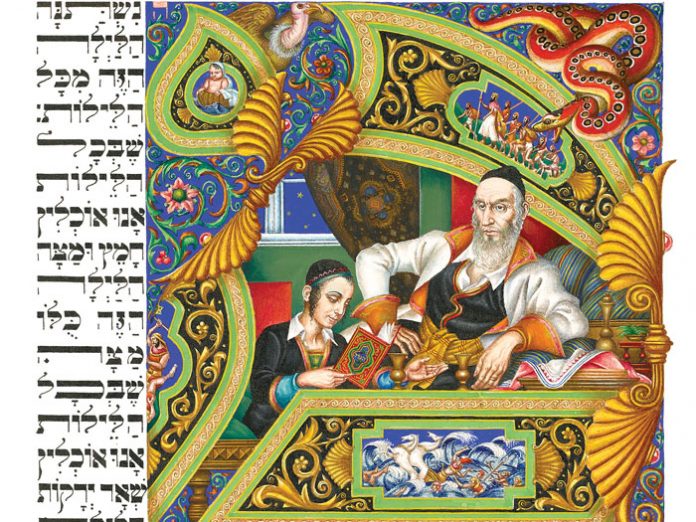The discovery of the Cairo Genizah, the storehouse of medieval manuscripts and documents in the Ben Ezra Synagogue in Fustat, Old Cairo, in the late nineteenth century has led to a virtual rediscovery of Jewish history during the Middle Ages. In fact, it has provided us with an enormous amount of information about our sacred literature, as well as illuminating the social and political history of Jews in the Middle East and Mediterranean basin. Some of the items found even related to Europe, such as very early writings in Yiddish. But one of the most significant gains was a deeper understanding of the history and literature of the geonim of Babylonia, as well as the text of our siddur and the Pesach Seder.
It is actually quite amazing that some of the most important manuscripts of the oldest versions of the Haggadah aren’t found in the Jewish National Library in Jerusalem, the British Museum in London, or even in the Cambridge University Library’s massive genizah collection. Rather, they are right here in the United States, at the Center for Judaic Studies of the University of Pennsylvania in Philadelphia and the Jewish Theological Seminary in Manhattan. The material in these collections has facilitated numerous amazing studies on the Haggadah, providing us with textual evidence from the tenth century CE. News reports of an even earlier version of the Haggadah, actually a manuscript with some other tefillos and parts of the Seder, appear to be premature as the authenticity of this document has been questioned.
All of us are familiar with the concluding statement of the Pesach Seder: “Chasal siddur Pesach k’hilchaso, k’chol mishpato v’chukaso, the arrangement of the Pesach is completed, according to all its regulations and laws. Just as we have merited to set it forth, so too may we merit to perform it.” These words are actually an excerpt from the Yotzeir piyyut (liturgical poem recited at Shacharis) for Shabbos Hagadol. This poem begins with a survey of the requirements to remove chametz and prepare matzah, and then goes on to enumerate the mitzvos and rituals that are to be performed at the Seder. The purpose of this piyyut, composed by R. Yosef ben Shmuel Tov Elem (mid-eleventh century; known as Bonfil in French), was to review the entire Pesach Seder on Shabbos Hagadol.





















